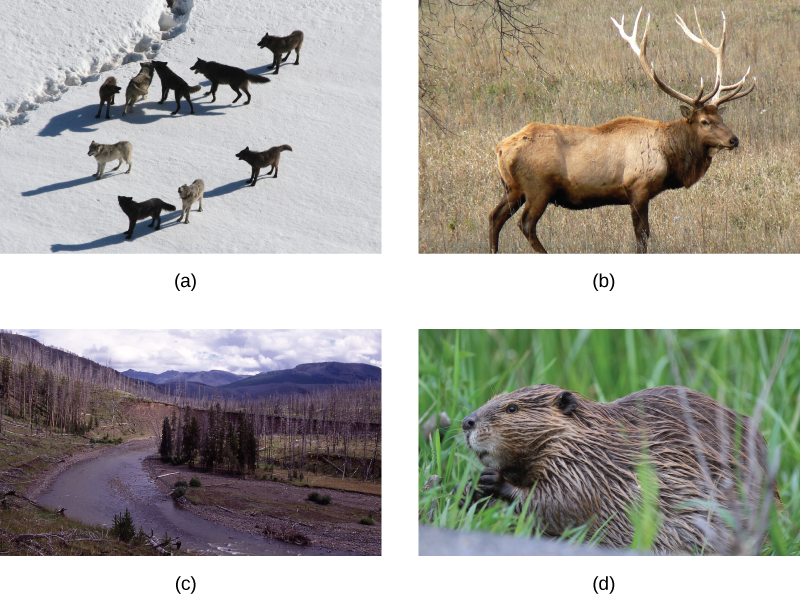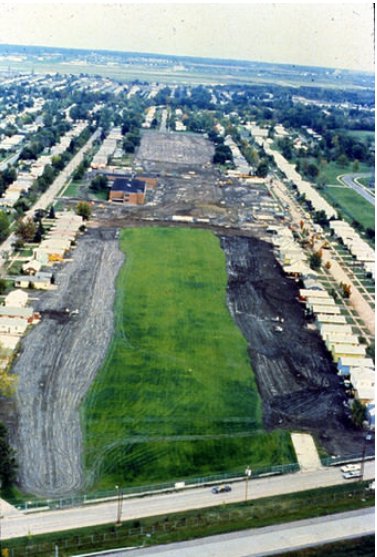11.5: Ecosystem Restoration
- Page ID
- 37286
\( \newcommand{\vecs}[1]{\overset { \scriptstyle \rightharpoonup} {\mathbf{#1}} } \)
\( \newcommand{\vecd}[1]{\overset{-\!-\!\rightharpoonup}{\vphantom{a}\smash {#1}}} \)
\( \newcommand{\id}{\mathrm{id}}\) \( \newcommand{\Span}{\mathrm{span}}\)
( \newcommand{\kernel}{\mathrm{null}\,}\) \( \newcommand{\range}{\mathrm{range}\,}\)
\( \newcommand{\RealPart}{\mathrm{Re}}\) \( \newcommand{\ImaginaryPart}{\mathrm{Im}}\)
\( \newcommand{\Argument}{\mathrm{Arg}}\) \( \newcommand{\norm}[1]{\| #1 \|}\)
\( \newcommand{\inner}[2]{\langle #1, #2 \rangle}\)
\( \newcommand{\Span}{\mathrm{span}}\)
\( \newcommand{\id}{\mathrm{id}}\)
\( \newcommand{\Span}{\mathrm{span}}\)
\( \newcommand{\kernel}{\mathrm{null}\,}\)
\( \newcommand{\range}{\mathrm{range}\,}\)
\( \newcommand{\RealPart}{\mathrm{Re}}\)
\( \newcommand{\ImaginaryPart}{\mathrm{Im}}\)
\( \newcommand{\Argument}{\mathrm{Arg}}\)
\( \newcommand{\norm}[1]{\| #1 \|}\)
\( \newcommand{\inner}[2]{\langle #1, #2 \rangle}\)
\( \newcommand{\Span}{\mathrm{span}}\) \( \newcommand{\AA}{\unicode[.8,0]{x212B}}\)
\( \newcommand{\vectorA}[1]{\vec{#1}} % arrow\)
\( \newcommand{\vectorAt}[1]{\vec{\text{#1}}} % arrow\)
\( \newcommand{\vectorB}[1]{\overset { \scriptstyle \rightharpoonup} {\mathbf{#1}} } \)
\( \newcommand{\vectorC}[1]{\textbf{#1}} \)
\( \newcommand{\vectorD}[1]{\overrightarrow{#1}} \)
\( \newcommand{\vectorDt}[1]{\overrightarrow{\text{#1}}} \)
\( \newcommand{\vectE}[1]{\overset{-\!-\!\rightharpoonup}{\vphantom{a}\smash{\mathbf {#1}}}} \)
\( \newcommand{\vecs}[1]{\overset { \scriptstyle \rightharpoonup} {\mathbf{#1}} } \)
\( \newcommand{\vecd}[1]{\overset{-\!-\!\rightharpoonup}{\vphantom{a}\smash {#1}}} \)
\(\newcommand{\avec}{\mathbf a}\) \(\newcommand{\bvec}{\mathbf b}\) \(\newcommand{\cvec}{\mathbf c}\) \(\newcommand{\dvec}{\mathbf d}\) \(\newcommand{\dtil}{\widetilde{\mathbf d}}\) \(\newcommand{\evec}{\mathbf e}\) \(\newcommand{\fvec}{\mathbf f}\) \(\newcommand{\nvec}{\mathbf n}\) \(\newcommand{\pvec}{\mathbf p}\) \(\newcommand{\qvec}{\mathbf q}\) \(\newcommand{\svec}{\mathbf s}\) \(\newcommand{\tvec}{\mathbf t}\) \(\newcommand{\uvec}{\mathbf u}\) \(\newcommand{\vvec}{\mathbf v}\) \(\newcommand{\wvec}{\mathbf w}\) \(\newcommand{\xvec}{\mathbf x}\) \(\newcommand{\yvec}{\mathbf y}\) \(\newcommand{\zvec}{\mathbf z}\) \(\newcommand{\rvec}{\mathbf r}\) \(\newcommand{\mvec}{\mathbf m}\) \(\newcommand{\zerovec}{\mathbf 0}\) \(\newcommand{\onevec}{\mathbf 1}\) \(\newcommand{\real}{\mathbb R}\) \(\newcommand{\twovec}[2]{\left[\begin{array}{r}#1 \\ #2 \end{array}\right]}\) \(\newcommand{\ctwovec}[2]{\left[\begin{array}{c}#1 \\ #2 \end{array}\right]}\) \(\newcommand{\threevec}[3]{\left[\begin{array}{r}#1 \\ #2 \\ #3 \end{array}\right]}\) \(\newcommand{\cthreevec}[3]{\left[\begin{array}{c}#1 \\ #2 \\ #3 \end{array}\right]}\) \(\newcommand{\fourvec}[4]{\left[\begin{array}{r}#1 \\ #2 \\ #3 \\ #4 \end{array}\right]}\) \(\newcommand{\cfourvec}[4]{\left[\begin{array}{c}#1 \\ #2 \\ #3 \\ #4 \end{array}\right]}\) \(\newcommand{\fivevec}[5]{\left[\begin{array}{r}#1 \\ #2 \\ #3 \\ #4 \\ #5 \\ \end{array}\right]}\) \(\newcommand{\cfivevec}[5]{\left[\begin{array}{c}#1 \\ #2 \\ #3 \\ #4 \\ #5 \\ \end{array}\right]}\) \(\newcommand{\mattwo}[4]{\left[\begin{array}{rr}#1 \amp #2 \\ #3 \amp #4 \\ \end{array}\right]}\) \(\newcommand{\laspan}[1]{\text{Span}\{#1\}}\) \(\newcommand{\bcal}{\cal B}\) \(\newcommand{\ccal}{\cal C}\) \(\newcommand{\scal}{\cal S}\) \(\newcommand{\wcal}{\cal W}\) \(\newcommand{\ecal}{\cal E}\) \(\newcommand{\coords}[2]{\left\{#1\right\}_{#2}}\) \(\newcommand{\gray}[1]{\color{gray}{#1}}\) \(\newcommand{\lgray}[1]{\color{lightgray}{#1}}\) \(\newcommand{\rank}{\operatorname{rank}}\) \(\newcommand{\row}{\text{Row}}\) \(\newcommand{\col}{\text{Col}}\) \(\renewcommand{\row}{\text{Row}}\) \(\newcommand{\nul}{\text{Nul}}\) \(\newcommand{\var}{\text{Var}}\) \(\newcommand{\corr}{\text{corr}}\) \(\newcommand{\len}[1]{\left|#1\right|}\) \(\newcommand{\bbar}{\overline{\bvec}}\) \(\newcommand{\bhat}{\widehat{\bvec}}\) \(\newcommand{\bperp}{\bvec^\perp}\) \(\newcommand{\xhat}{\widehat{\xvec}}\) \(\newcommand{\vhat}{\widehat{\vvec}}\) \(\newcommand{\uhat}{\widehat{\uvec}}\) \(\newcommand{\what}{\widehat{\wvec}}\) \(\newcommand{\Sighat}{\widehat{\Sigma}}\) \(\newcommand{\lt}{<}\) \(\newcommand{\gt}{>}\) \(\newcommand{\amp}{&}\) \(\definecolor{fillinmathshade}{gray}{0.9}\)Ecosystem restoration is the process of bringing an area back to its natural state, before it was impacted through destructive human activities. It holds considerable promise as a mechanism for maintaining or restoring biodiversity and reinstating ecosystem services. It requires a broad interdisciplinary approach involving many different scientific fields of study (for example, biology, ecology, hydrology and geology). Reintroducing wolves, a top predator, to Yellowstone National Park in 1995 led to dramatic changes in the ecosystem that increased biodiversity. The wolves (figure \(\PageIndex{a}\)) function to suppress elk and coyote populations and provide more abundant resources to the detritivores. Reducing elk populations has allowed revegetation of riparian areas (those along the banks of a stream or river), which has increased the diversity of species in that ecosystem. Reduction of coyote populations by wolves has increased the prey species previously suppressed by coyotes. In this ecosystem, the wolf is a keystone species, meaning a species that is instrumental in maintaining diversity within an ecosystem. Removing a keystone species from an ecological community causes a collapse in diversity. The results from the Yellowstone experiment suggest that restoring a keystone species effectively can have the effect of restoring biodiversity in the community. Ecologists have argued for the identification of keystone species where possible and for focusing protection efforts on these species. It makes sense to return the keystone species to the ecosystems where they have been removed.

Other large-scale restoration experiments underway involve dam removal. In the United States, since the mid-1980s, many aging dams are being considered for removal rather than replacement because of shifting beliefs about the ecological value of free-flowing rivers. The measured benefits of dam removal include restoration of naturally fluctuating water levels (often the purpose of dams is to reduce variation in river flows), which leads to increased fish diversity and improved water quality (see Dams and Reservoirs for more about the impact of dams). In the Pacific Northwest of the United States, dam removal projects are expected to increase populations of salmon, which is considered a keystone species because it transports nutrients to inland ecosystems during its annual spawning migrations. In other regions, such as the Atlantic coast, dam removal has allowed the return of other spawning anadromous fish species (species that are born in fresh water, live most of their lives in salt water, and return to fresh water to spawn). Some of the largest dam removal projects have occurred recently, such as Elwha Dam on the Olympic Peninsula of Washington State. The large-scale ecological experiments that these removal projects constitute will provide valuable data for other dam projects slated either for removal or construction.
Besides physical processes, socioeconomic factors must also be considered in a restoration project. Actions of humans have historically been important in shaping ecosystems, and are important in determining the success of restoration efforts. Because the cost to restore an individual site can involve millions of dollars, government support is a necessity.
Environmental Remediation
Danger to human health from both historic and modern pollution requires that cleanup measures be implemented. Remediation is aimed at neutralization, containment, and/or removal of the polluting chemicals. The goal is to prevent the spread of the pollution, or to reduce it to levels that will not appreciably risk human health. Many times, it is physically impossible or financially unfeasible to completely clear all contamination. Often, experts and the public disagree on how clean is clean enough.
Many communities are struggling to find the funds and technological expertise needed to clean up polluted areas. Some settings, such as brownfields, can be remediated fairly easily. Brownfields are abandoned industrial or commercial facilities or blighted urban areas that need to be cleansed of contamination before they can be redeveloped. Other areas, because of their size or the extreme toxicity of their contaminants, require very expensive, complex, and long-term remediation. Many of these have been designated as Superfund sites.
Superfund sites are areas with the most toxic contamination in the United States. The contamination may not only make the site itself too dangerous to inhabit, but often leaks toxic levels of pollutants into the surrounding soil, water, or air. An example of a Superfund site is Love Canal in Niagara Falls, New York (figure \(\PageIndex{b}\)). The canal was a chemical waste dump for many years, then in the 1950’s was covered with soil and sold to the city. Over time, many homes and a school were built over the former dump. In the 1970’s, heavy rains raised the water table and carried contaminants back to the surface. Residents noticed foul smells, and gardens and trees turned black and died. Soon after, rates of birth defects, cancer, and other illnesses began to rise sharply. In 1977, the State of New York and the federal government began remediation work. Buildings were removed, and all residents were bought out and relocated, contaminated deposits and soils were excavated, and remaining soils and groundwater were treated and sealed off to prevent further spread of the contamination. Remediation activities have now been completed at this site.

The type of pollution and the medium affected (air, water, or soil) determine remediation methods. Methods include incineration, absorption onto carbon, chemical methods, or bioremediation. Bioremediation is the use of plants, bacteria, or fungus to “digest” the contaminant to a non-toxic or less toxic form. All of these methods tend to be expensive and time-consuming.
Reclamation and Mitigation
Reclamation involves salvaging some features of a degraded habitat, but it may not restore the ecosystem fully (figure \(\PageIndex{c}\)). For example, instead of abandoning a mined area once resources have been collected, it can be reclaimed by planting vegetation, reshaping the landscape, and redirecting water flow. However the reclaimed land still lacks many features of the original ecosystem, such as complex topography, vegetation that took tens or hundreds of years to grow, soil quality, and an intricate network of streams.

Sometimes, actions can be taken to avoid, reduce or compensate for the effects of environmental damage. Such mitigation efforts have been taken by the Army Corps of Engineers during construction projects. The native plants are removed from a site before construction begins and transplanted at a special holding site. After the construction project is completed, the native plants are replanted using those from the holding site. Another example of mitigation might involve the creation or enhancement of wetlands in one area, in order to compensate for permitted wetland losses in another area. Mitigation often goes hand-in-hand with restoration. Texaco, in conjunction with environmental groups and the United States Fish and Wildlife Service, restored 500 acres of agricultural lands in the lower Mississippi Delta to bottomland hardwoods. Texaco received environmental credits for the mitigating effects of the new woodlands on air quality.
Attributions
Modified by Melissa Ha from the following sources:
- Preserving Biodiversity and Case Study - The Love Canal Disaster from Environmental Biology by Matthew R. Fisher (licensed under CC-BY)
- Preserving Biodiversity from General Biology by OpenStax (licensed under CC-BY)
- Issues and Opinions from AP Environmental Science by University of California College Prep, University of California (licensed under CC-BY). Download for free at CNX.


